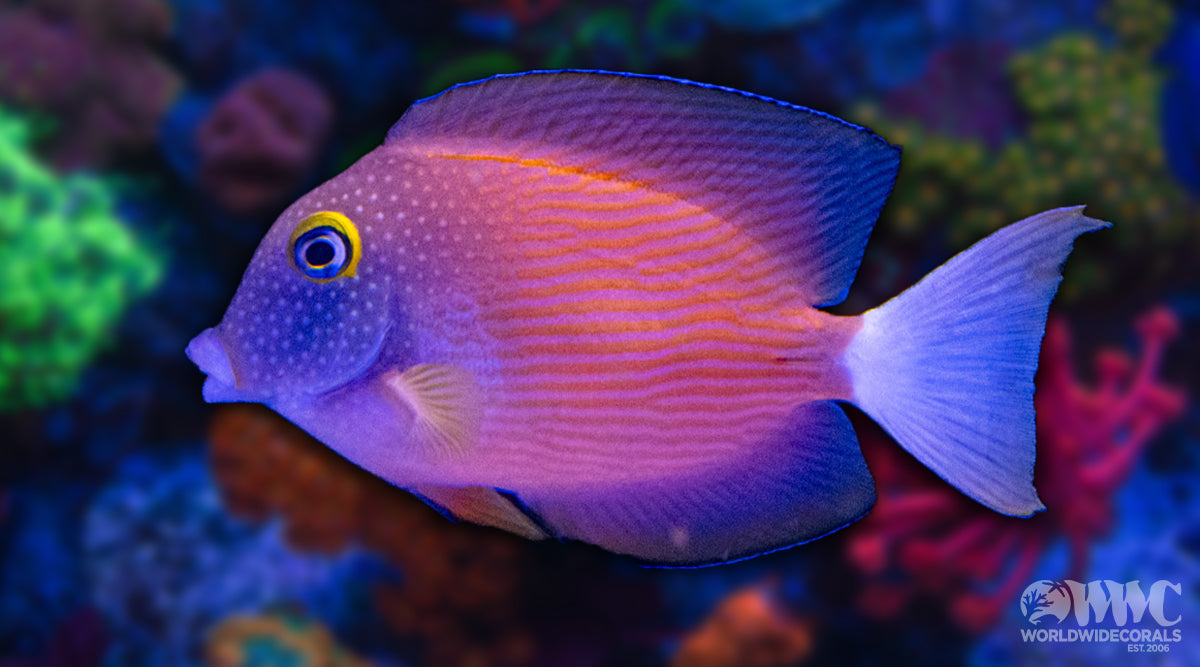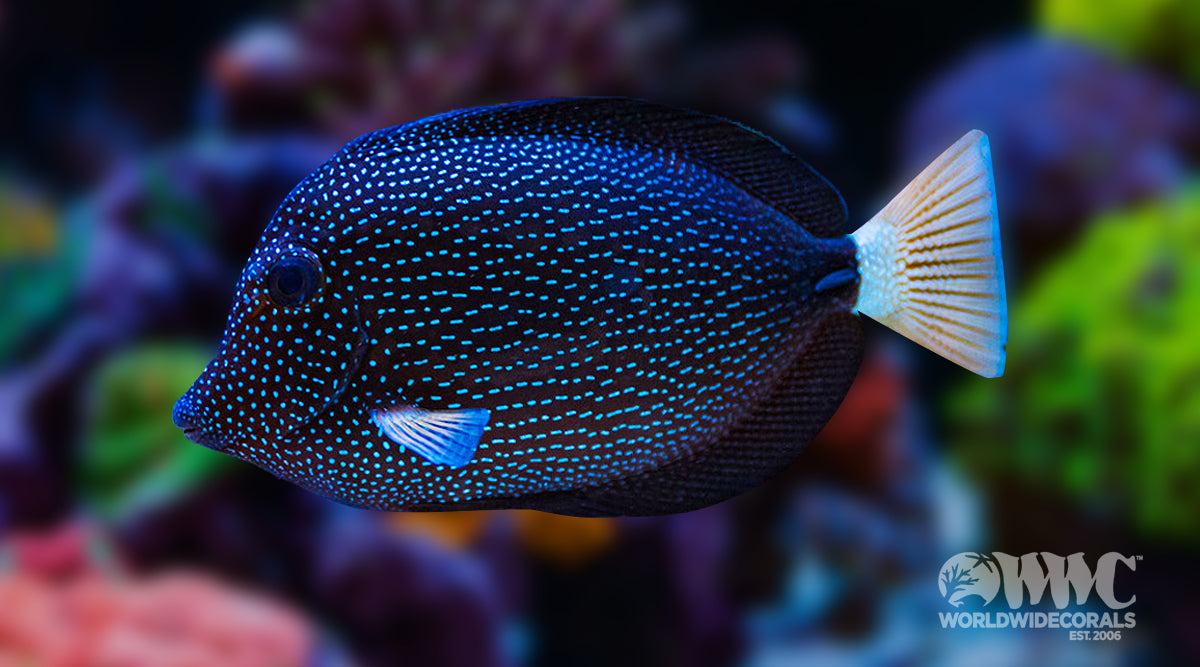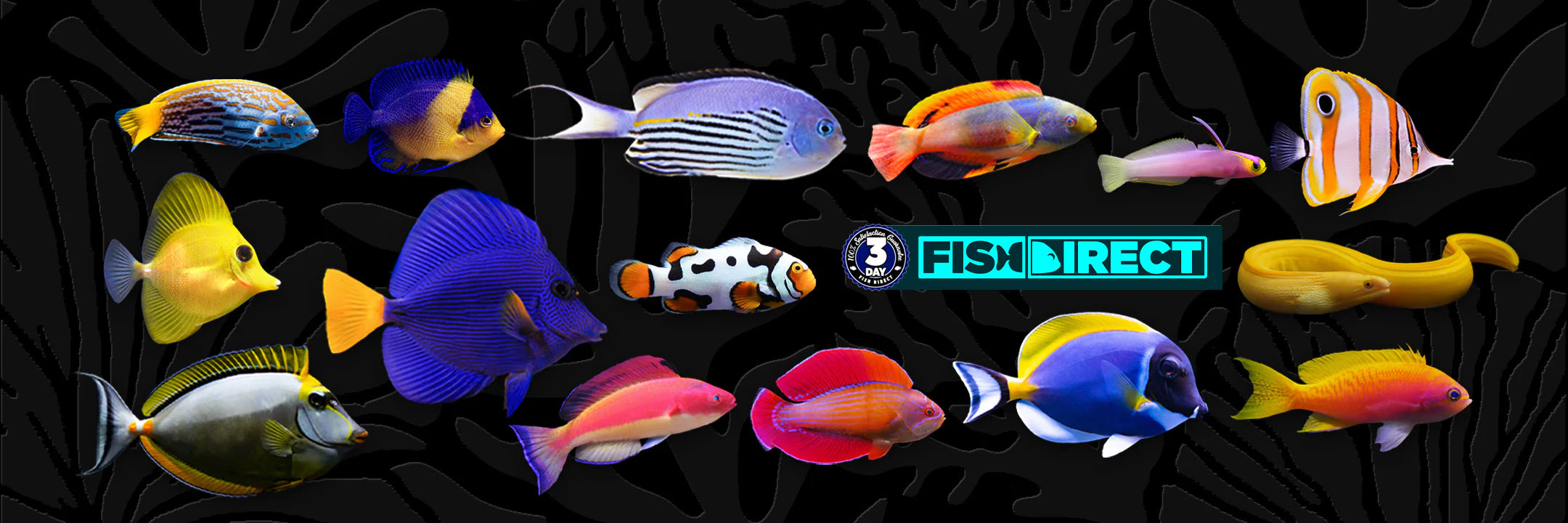5 Mistakes Hobbyists Should Stop Making
Mistakes are a natural part of life, in fact learning from them is one of the greatest ways we grow. These learning experiences are encountered by experts and beginners alike. As aquarists and reef hobbyists there are a lot of mistakes we make but there are a few that stand out as being common. Impulse buying, skipping quarantine, over feeding, doing too much, and getting tripped up with testing tools are 5 areas where reefers commonly make mistakes. In addition to sharing why things like impulse buying, and overfeeding are issues, here are tips to help prevent them from happening.
At some point during our journey in aquarium keeping we have all been guilty of impulse buying. It can happen when you least expect it, as you walk in to pick up some more food for your tank and you spot the cutest fish. It could happen when your LFS has a special sale and that fish or coral your friend has been talking about is on sale at a price too good to resist.
Oftentimes when impulse buys happen, very little is known about the new addition to the tank, just that it looks colorful, is unique, or has a great personality. There is little knowledge about how big the species will get and what size tank it needs or what its personality and temperament is like- will it get along with other species already in the tank?
While store employees are there to help you and may be able to answer your questions, it is ultimately your responsibility to put in the time and do the research to know if it will be a good fit. As an example that fun looking urchin with all its collected shells, it’s great at cleaning, and has an excellent temperament, but in a tank full of unattached frags, it could pose a problem. Another example is the Pinnatus Batfish. As a young fish they are jet black lined in neon orange, are fairly small, and peaceful, but as they grow, they go through a complete transformation. In a short period of time they will change to a silvery gray with dark stripes and grow to a size of 2.5 feet from head to tail with an appetite to match their increased size. Knowing all of that would likely cause you to take pause before adding it to your tank- research is important.
The Batfish is a great example of how quickly a fish can grow. Many fish grow at a slower pace, but whatever speed they grow, it is important to have the correct tank size to ensure their health and well being. Doing some research is a lot easier and much more affordable than getting a fish that’s going to get too big for your current setup.
There is an easy fix for not impulse buying- make a list! When you first start your tank, make a list of all the species you want to keep, plan out your ocean ecosystem and keep that list somewhere easy-inside your tank stand or even better, on your phone. This way if you visit a store and see something you like you can check your list. If it's on there you know it will be compatible with everything else you already have and want to get in the future, and you have the right setup for it. Another thing you could do is ask the store if they can hold it for you for a period of time so you can go home and do your research. If everything checks out and you still want it, you can go back and get your new fish or coral. As previously stated, most hobbyists have made this mistake before. If it happens to you, check with the store to see if they can recommend a solution, never release a fish or coral into the wild.
Quarantining might not be for everyone, but it should be. Even if you’ve had the best of luck without quarantining, there is always a risk of losing not just a fish or a coral, but an entire system. Many stores will quarantine before offering them for sale, and this is great, but you should still quarantine at home before adding to your display tank.
Many fish and coral come from halfway across the world and that travel can be incredibly stressful. While the stress itself won’t necessarily kill them, it can leave the door open for infections and parasites, some of which don’t manifest themselves immediately. Some places in the line of custody may provide treatments proactively, which can be a double edged sword, as it will treat things before they get out of control, but it can also mask issues. There are numerous signs you can look for to tell if a fish is healthy, but if it has been treated, the red flag signs might not show up until you get the fish home.
Fish and coral can harbor all sorts of invasive pests and illnesses. When they are placed directly in a display tank anything they are carrying can be released into the rest of the tank making any issues much larger and harder to combat.
When it comes to quarantining, there is a bit of debate on how long the quarantine period should be. It ranges from a minimum of 2 weeks all the way up to 3 months, but the average is usually 30 days. During this time if something is wrong it should manifest and in a controlled environment, it's much easier to treat.
Quarantine tanks are something that are great to keep on hand both for new fish, but also for sick fish emergencies. If you want the security of having a quarantine tank but not the hassle of another tank to maintain, consider doing the following. In an existing healthy tank, keep some extra rocks or filter media on hand in the sump or display. With an already active system it will have the beneficial bacteria you’ll need. In addition to the media that's stored in the running tank, keep a spare 10 gallon tank with an appropriately sized heater, hang on back filter, and some various sized pieces of pvc or artificial plants in your fish closet. If you keep this kit on hand you will be prepared for whenever you need it.
Eating is something we all have to do and that makes it relatable and understandable. Feeding our fish is a great way to bond with them, and it is easy to get carried away when we are only trying to do our best for our fish and corals.
If your fish have come to associate you with food, they may try all sorts of tactics to get your attention and beg for food. It can be hard, but resist feeding them every time you walk by the tank and when they are begging. Unlike humans, most fish don’t need to eat all the time. In fact in the wild there are some fish who go days and even weeks between meals. Depending on the species of fish and their natural behaviors they may not need to eat as much. Consider larger carnivores like lionfish. They will eat large meals with a lower frequency. The opposite is true of reef fish like anthias who are always swimming and darting about the reef eating bits of food as they go.
Knowing your fish’s requirements will go along with determining how much to feed them. A general rule of thumb for feeding fish is to offer them only what they will eat in 2-3 minutes. Much more and it can end up as waste, which is what we try to avoid. Not only is it a pain trying to clean as it gets pushed around the tank, but missed food waste can cause issues with tank water quality by increasing the phosphates and nitrates.
As mentioned above there are certain species who do need to eat more often than others. Herbivores are another group of fish who will graze and pick at foods throughout the day, but if you want them to help keep your tank and rockwork clean and free of algae, it might be in your best interest to limit the amount of extra seaweed they are offered. Just like with pellet, flake, gel, and frozen, it is important to remove any uneaten nori from feeding clips after a few hours.
Overfeeding is a mistake that is easy to make, even for seasoned reef keepers, but one way to reduce the chance of overfeeding is to set a schedule. Much like you would instruct a pet sitter to take care of your pets when you're on vacation, set aside dedicated days, times, and amounts to feed your fish and corals and try to stick to that. If you can do that you’ll likely find yourself avoiding overfeeding and all the issues it brings.
There are a lot of different testing tools on the market that you can use to monitor the water quality in your aquarium and with them there can be some misconceptions and mistakes.
Each of the products will vary in price and quality, but it's not just limited to that, they can also vary in their accuracy. Many of the testing tools the average hobbyist uses aren’t high tech top of the line scientific measuring tools. They are great at giving you an idea or an estimate of your tank’s water quality, but don’t expect the accuracy of a table top multi-thousand dollar piece of lab equipment. While there are affordable, accurate testing tools on the market there are also tools that are a bit more basic and may not be as accurate for example hydrometers, dip strips, and badges that bring attention to elevated levels of toxins.
One mistake when it comes to testing is immediately testing the water after dosing. It’s important to give the water 10 min to an hour to mix (depending on product being mixed and tank size) before testing, otherwise you can get an inaccurate test.
Along the same lines, if you test and get a value that is surprising or abnormal, don’t be afraid to retest. Consider taking an average of 2 or 3 tests. If it still seems strange, check to see that your test kit and reagents aren’t expired, a bad test kit can skew results. Lastly, make sure you are using test kits you can read. Oftentimes the end results of the color changing kits can be hard to read. A good example of this is phosphate tests. If you have a hard time seeing the color change or are color blind, consider getting a digital tester like one of the Hanna checkers.
When it comes to our aquariums we only want the best for them and sometimes in our excitement we tend to over do things.
A common mistake, especially for beginners, is adding products that you don’t need. Make sure you know and understand exactly what you are adding to your tank and why your tank needs it. Just adding things because it was mentioned in a forum or on a video can be a slippery slope. It is a company’s job to sell you something, and if they are doing it well, it is easy to feel like you need to add a bunch of different products to your tank.
Another area where hobbyists can do too much is filtration equipment. The phrase “too much of a good thing can be bad” holds true for filtration-there is such a thing as over-filtering. Having a full suite of filtration equipment from skimmers, reactors, UV, and ozone can wipe out much of the microbial biodiversity of the tank and cause a whole bunch of issues. An aquarium doesn’t have to have all of things on it to be a healthy tank. There are situations where you might need to have additional filtration, and that's fine, but consider putting it on a timer so that it isn’t running 24/7. We want to keep our tanks clean, not sterile.
Another mistake is doing too large of a water change. There might be emergency situations that require it, but for the most part, water changes should be no more than 10-20% at a time. Any more can stress the fish and corals.
Most of these mistakes occur because we want our tanks to be the best they can be. Instead of being concerned with chasing numbers, try to spend more time taking it slowly. Spend time watching the system. If there is something wrong, keep an eye on it and make small adjustments if needed. Everyone’s tank is a bit different. What works for someone else might not work for you and that’s okay.
At the end of the day, we have all made mistakes and we’re likely to make some in the future, that's okay as long as you learn and grow from them. Like Henry Ford once said “The only real mistake is the one from which we learn nothing”.





